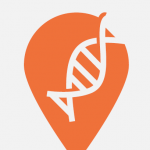RRBS
Cases
Technical Information
Contact Us / Wish List
 RRBS is a bisulfite-based method that enriches CG-rich parts of the genome, thereby reducing the amount of sequencing required while capturing the majority of promoters and other relevant genomic regions. The approach provides single-nucleotide resolution and quantitative DNA methylation measurements as well. Moreover, it is highly sensitive and also suitable for clinical samples.
RRBS is a bisulfite-based method that enriches CG-rich parts of the genome, thereby reducing the amount of sequencing required while capturing the majority of promoters and other relevant genomic regions. The approach provides single-nucleotide resolution and quantitative DNA methylation measurements as well. Moreover, it is highly sensitive and also suitable for clinical samples.Benefits:
- Scale: RRBS is a high-throughput method well suited to genome-wide DNA methylation studies.
- Reproducibility: Comparison of sample analyses shows highly reproducible results: 85-95% overlap between multiple samples, which enables comparative studies.
- Single nucleotide resolution: RRBS localizes methylation status to individual CpG sites within each DNA fragment, providing superior data to alternative profiling methods such as MeDIP-Seq, which do not provide equivalent resolution.
- Coverage: RRBS has very good coverage for more than 5 million CpG sites at the whole-genome scale, 65–75% of which are covered by ≥10x coverage depth.
- Sample size and quality: Analysis can be accomplished with very limited genomic DNA, even if it is degraded. Thus it is suitable for clinical sample detection (including FFPE samples).
Systematic Assessment of Reduced Representation Bisulfite Sequencing to Human Blood Samples: A Promising Method for Large-Sample-Scale Epigenomic Studies. J Biotechnol. 157(1):1-6 (2012).
 As opposed to the time and cost-intensive method of direct bisulfite sequencing, we applied the method of reduced representation bisulfite sequencing (RRBS) to systematically assessed the genomic coverage, coverage depth, and reproducibility by applying it to the human peripheral blood mononuclear cells from YH, the Asian individual whose genome and epigenome was deciphered in the YH project. We also investigated the concordance of DNA methylation levels measured by RRBS and direct bisulfite sequencing for the detected CpG sites. Our result suggests that RRBS can cover more than half of CpG islands and promoter regions with a good coverage depth. Furthermore, the proportion of the CpG sites covered by the biological replicates reaches 80-90%, indicating good reproducibility.
As opposed to the time and cost-intensive method of direct bisulfite sequencing, we applied the method of reduced representation bisulfite sequencing (RRBS) to systematically assessed the genomic coverage, coverage depth, and reproducibility by applying it to the human peripheral blood mononuclear cells from YH, the Asian individual whose genome and epigenome was deciphered in the YH project. We also investigated the concordance of DNA methylation levels measured by RRBS and direct bisulfite sequencing for the detected CpG sites. Our result suggests that RRBS can cover more than half of CpG islands and promoter regions with a good coverage depth. Furthermore, the proportion of the CpG sites covered by the biological replicates reaches 80-90%, indicating good reproducibility.
Bioinformatics:
- Data Filtering (removing adaptor sequences, contamination and low-quality reads from raw reads) and Production Statistics
- Reads Alignment
- Coverage analysis for Promoter and CpG Islands
- Covered Promoter and CpG Islands
- Theoretical and Experimental Coverage of Cytosine
- Cumulative Distribution of Effective Sequencing Depth in Cytosine
- Coverage of CpG sites
- Comparison of theoretical coverage and coverage in each different depth
- Methylation Analysis for Promoter and CGI
Sample Requirements:
- Purity:OD260/280=1.8-2.0, without RNA contamination
- Concentration: ≥50ng/μl
- DNA amount: single library preparation starts from at least 3μg, the more the better. For FFPE or other degraded DNA samples, 5 μg is recommended.
RRBS is available for both human and mouse samples.


